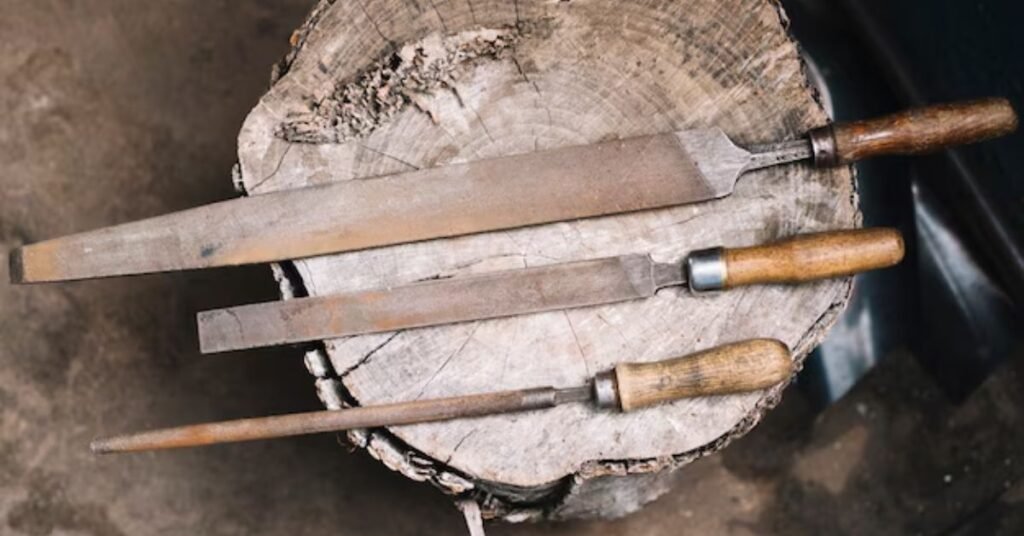Logging is one of the world’s oldest professions, requiring skill, precision, and the right set of tools. For centuries, loggers have relied on specialized equipment to cut, shape, and transport timber efficiently. In modern times, the loggers tool nyt used by loggers have evolved to meet the demands of the profession, but the fundamentals remain the same. This article explores the essential tools loggers use, their functions, and how they contribute to the timber harvesting process.
Introduction: The Importance of Loggers Tool nyt in the Timber Industry
The logging industry plays a vital role in supplying raw materials for construction, furniture, paper, and countless other products. To accomplish their tasks, loggers rely on an array of tools designed to cut, move, and process large trees. Without the right tools, logging would be inefficient and dangerous. Whether you’re a professional logger or an amateur woodsman, understanding these tools is key to safe and productive timber harvesting.
1. The Chainsaw: A Logger’s Primary Tool
The chainsaw is arguably the most iconic tool in the loggers tool nyt industry. Known for its power and efficiency, the chainsaw allows loggers to cut down trees quickly and with precision.
2. Different Types of Chainsaws
There are two main types of chainsaws: gas-powered and electric. Gas-powered chainsaws are preferred for large-scale logging operations due to their power and mobility. Electric chainsaws, on the other hand, are quieter and lighter, making them ideal for smaller jobs or home use. Both types have their advantages, depending on the scale and nature of the task.
3. The Axe: A Traditional Logging Tool
Long before chainsaws, loggers relied on axes to fell trees and shape timber. The axe remains an important tool for smaller logging tasks and splitting wood. While it may not be as efficient as modern machinery, the axe requires skill and precision, making it a tool of craftsmanship.
4. Different Types of Logging Axes
There are various types of axes designed for different tasks. The felling axe, with its long handle and sharp blade, is used to cut down trees. The splitting maul, on the other hand, is heavier and designed for splitting logs into smaller sections. Understanding the differences between these tools helps loggers select the right one for the job.
5. The Crosscut Saw: Old-School Precision
Before the invention of the chainsaw, the crosscut saw was a common tool for cutting large trees. These saws require two people, one on each end, to pull the blade back and forth through the tree trunk.
6. Maintaining and Sharpening Crosscut Saws
Maintaining a sharp edge on a crosscut saw is essential for efficient cutting. Regular sharpening and proper storage prolong the lifespan of these tools. Many loggers who use crosscut saws prefer to sharpen their tools by hand, ensuring precision and extending their use.
7. Log Tongs: Essential for Moving Heavy Timber
After trees are felled, they need to be transported. This is where log tongs come into play. Log tongs are a type of gripping tool that allows loggers to lift and move heavy logs with ease. These tongs have sharp hooks that dig into the wood, providing a secure grip for lifting.
8. Different Types of Log Tongs
Log tongs come in different sizes and styles depending on the size of the logs being moved.Choosing the right set of log tongs is important for ensuring safety and efficiency during log transport.
9. Peavey and Cant Hook: Tools for Handling Logs
Both the peavey and cant hook are tools used for rolling, lifting, and positioning logs. These loggers tool nyt help loggers move logs without using heavy machinery, making them essential for smaller logging operations. While they serve similar purposes, the main difference between the two tools is in their design.
10. The Difference Between a Peavey and Cant Hook
The cant hook features a blunt tip and a hook, making it ideal for rolling logs. The peavey, on the other hand, has a pointed spike on the end, which can be used to dig into the ground or the log itself. Both tools provide leverage, making it easier to position large logs.
11. Wedges: Supporting Safe Tree Felling
Wedges are small but critical tools used to guide the direction of a falling tree. They are also useful in splitting logs, making them versatile tools in the logging process.
12. Different Types of Wedges for Logging
There are different types of wedges, each serving a specific purpose. Felling wedges are designed to keep the tree from leaning backward, while splitting wedges help split logs into smaller pieces. Using the correct type of wedge ensures the safety and success of the logging task.
13. Timber Carrier: Transporting Logs with Ease
Timber carriers are tools designed to help loggers move large sections of timber manually. These carriers consist of a set of tongs attached to handles, allowing two people to lift and carry heavy logs. They provide a more efficient way of moving timber over short distances, especially in rough terrain.
14. Manual vs. Machine Timber Carriers
While manual timber carriers require physical strength, they are ideal for small-scale operations or in areas where machinery cannot be used.
15. Chains: Securing and Transporting Logs
Chains are another essential tool for loggers, used to secure logs for transport. Whether attached to vehicles or used in conjunction with log tongs, chains ensure that logs are securely fastened during transportation. Heavy-duty chains prevent logs from shifting or rolling, improving safety during log transport.
16. How to Safely Use Logging Chains
When using logging chains, it’s important to ensure they are properly secured and the right size for the logs being moved. Loggers must regularly inspect chains for wear and tear, as damaged chains can lead to accidents. Proper use of chains is crucial for maintaining safety during the logging process.
17. Personal Protective Equipment for Loggers
Safety is paramount in the logging industry, and personal protective equipment (PPE) is essential for minimizing risks. Loggers face potential hazards such as falling trees, flying debris, and powerful machinery, making PPE vital for reducing injuries. A well-equipped logger is always mindful of safety standards.
18. Essential Protective Gear for Loggers
Essential PPE for loggers includes helmets, gloves, safety glasses, and steel-toe boots. Helmets protect against falling branches, while gloves provide a better grip on tools and prevent blisters. Steel-toe boots are necessary for protecting feet from heavy logs, and safety glasses guard the eyes from debris.
19. Maintaining and Storing Logging Tools
Proper maintenance of logging tools extends their lifespan and ensures they remain effective. Chainsaws, for instance, require regular oiling and sharpening to maintain cutting efficiency. Storing tools in dry, secure locations also prevents rust and corrosion.
20. Regular Inspections for Wear and Tear
Regular inspections help loggers identify any wear and tear on their tools, allowing for timely repairs or replacements. Damaged tools can pose serious safety risks, so keeping tools in top condition is a priority for any professional logger.
Conclusion: Loggers Tools nyt—The Backbone of a Dangerous Profession
Logging is one of the world’s most dangerous professions, and without the right tools, it becomes even riskier. From chainsaws to log tongs, each tool serves a unique and vital purpose in the timber harvesting process. By understanding the function and importance of these tools, loggers can perform their tasks safely and efficiently. The evolution of logger’s tools demonstrates how technology and innovation continue to shape this challenging yet rewarding industry. For both experienced professionals and hobbyists, having the right tools ensures not only productivity but also safety in the world of timber.
FAQs
1. What is the most important loggers tool nyt?
The chainsaw is the most essential tool for loggers, providing power and precision in cutting down trees.
2. How do peaveys differ from cant hooks?
Peaveys have a pointed spike for digging, while cant hooks feature a blunt end for rolling logs.
3. Why are wedges important in logging?
Wedges guide the direction of a tree’s fall, preventing it from leaning backward and improving felling safety.
4. What personal protective equipment do loggers need?
Loggers need helmets, gloves, steel-toe boots, and safety glasses to protect against falling debris and tool accidents.
5. How can loggers maintain their tools?
Loggers should clean, oil, and inspect tools after each use, storing them properly to prevent rust and corrosion.



